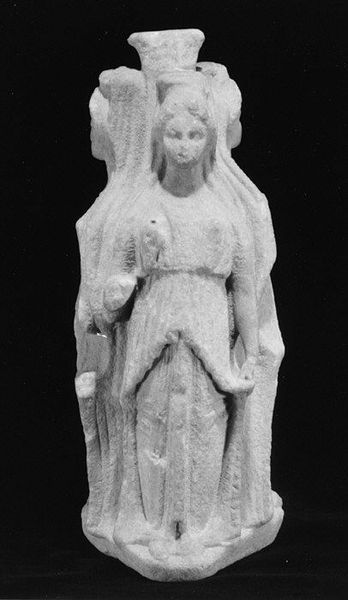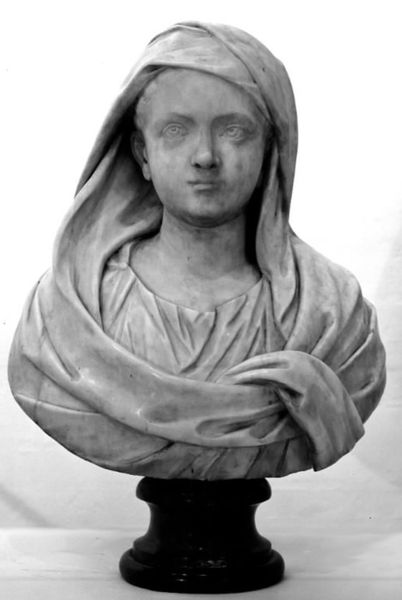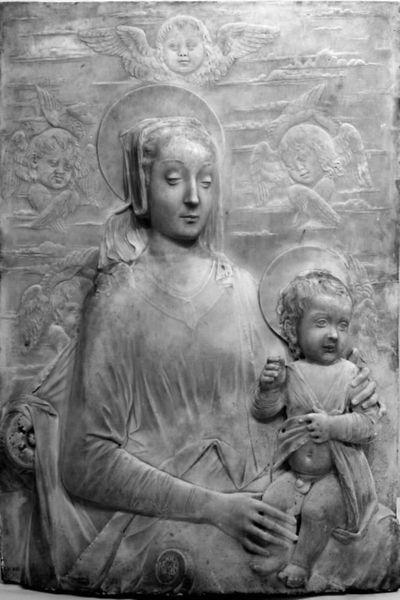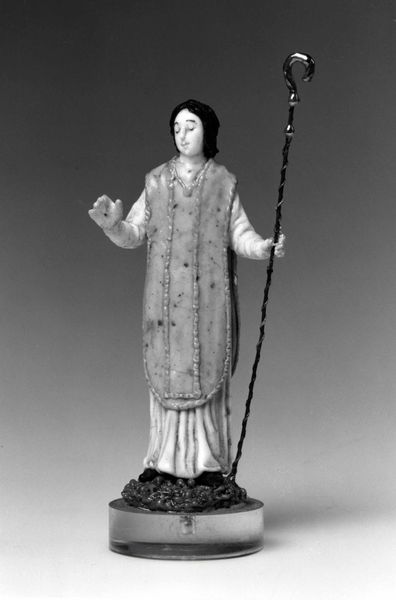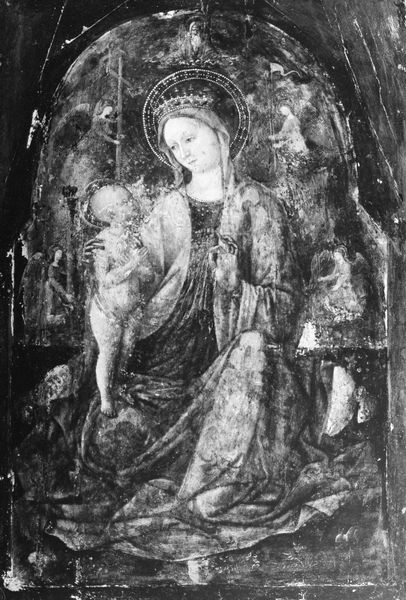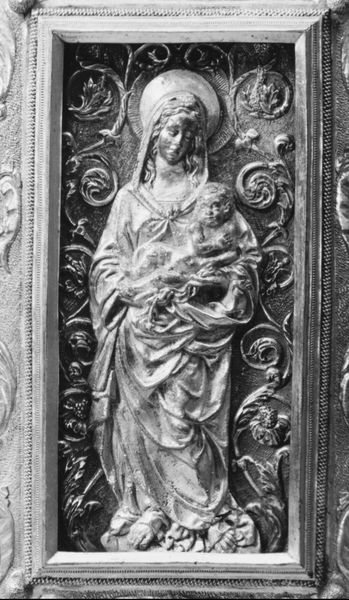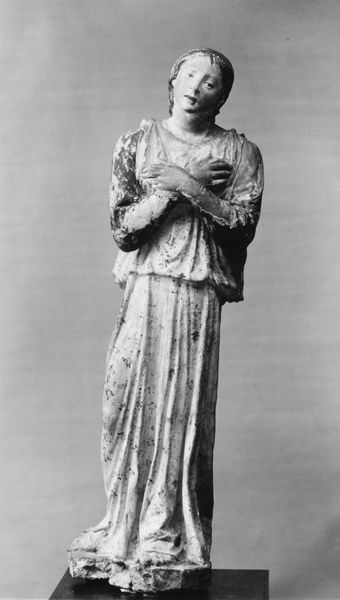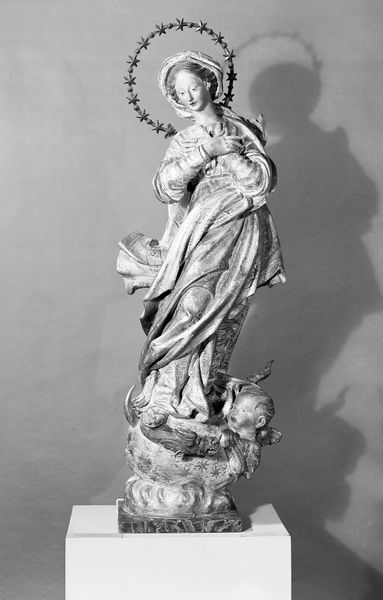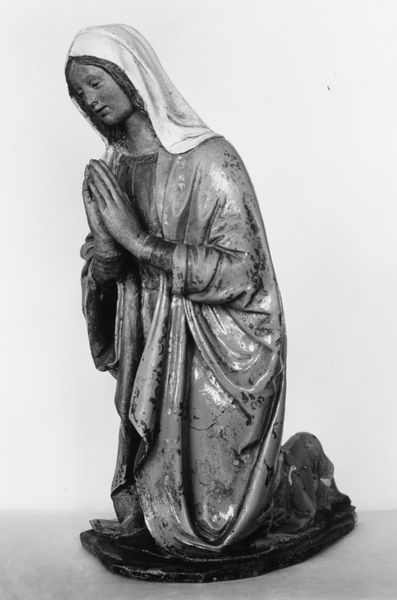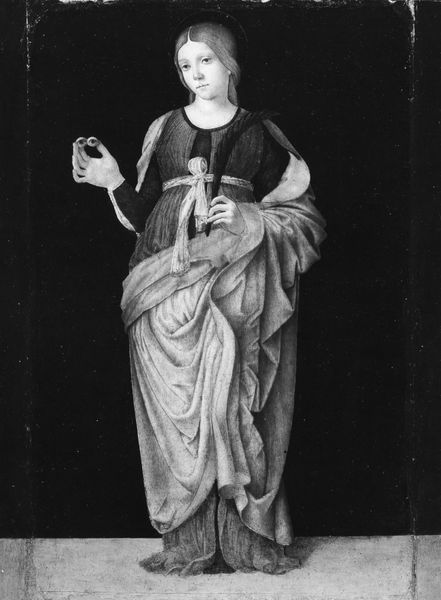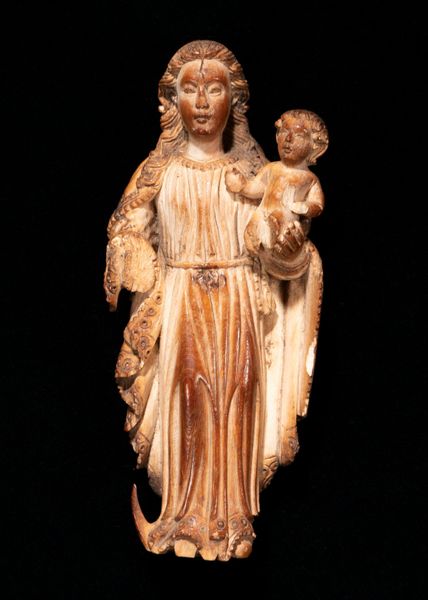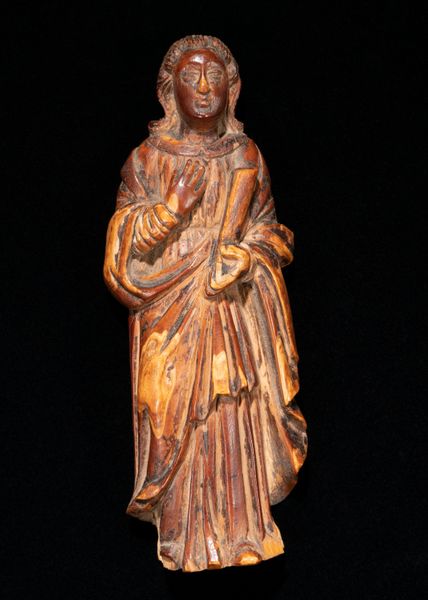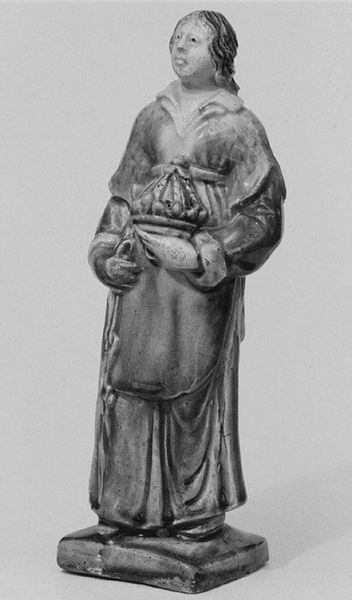
sculpture, wood
#
portrait
#
medieval
#
sculpture
#
figuration
#
sculpture
#
wood
#
northern-renaissance
Dimensions: 57 cm (height) x 34.5 cm (width) x 26 cm (depth) (Netto)
Curator: Let's turn our attention to this sculpture: Half-Figure of a Female Saint. Dating back to the early 16th century, it’s a northern Renaissance piece currently residing here at the SMK. Editor: The patina on that wood is striking. You can almost feel the age of the sculpture; and those serene features give a sense of contained power. Curator: Indeed. Carved from wood, its very presence speaks volumes about the cultural climate in which it was created. We can assume this was a piece of significance for devotion, and these figures often acted as social symbols of purity. Editor: Absolutely. Wood as a medium suggests a more accessible, perhaps less idealized, form of worship compared to marble or bronze. The carving looks very labor intensive and implies a dedicated workshop or individual artisan crafting a sacred object. It invites you to contemplate who made it and what their intentions were. Curator: That's an astute point. Though attributed to an anonymous artist, such devotional figures would have played a crucial role in shaping popular religious sentiment, especially at the cusp of the Reformation. The relative simplicity allowed wider circulation of imagery that encouraged the cult of saints. Editor: And look at the detail around the garment. I'm interested in what dyes were used. You know, the materials themselves reflect trade routes, localized skill, even the patronage of the church. Every piece of raw material tells a story. Curator: Undoubtedly, its purpose went beyond mere aesthetics. Religious orders surely influenced production, especially because the process became highly regulated to avoid idolatry in this turbulent period. The wheel might identify her as Saint Catherine. Editor: True. By analyzing its components, construction, and cultural utility, it starts to become very difficult to draw strict lines between devotion, economy and class dynamics. It certainly makes me ponder the social dynamics embedded within sacred materials. Curator: Reflecting on our perspectives highlights the intersection of artistic creation, religious ideology, and socio-political context inherent in the artwork's existence. Editor: Ultimately, considering these multiple narratives woven into its materiality provides such a rich, multifaceted lens through which we might better understand historical experience.
Comments
No comments
Be the first to comment and join the conversation on the ultimate creative platform.
